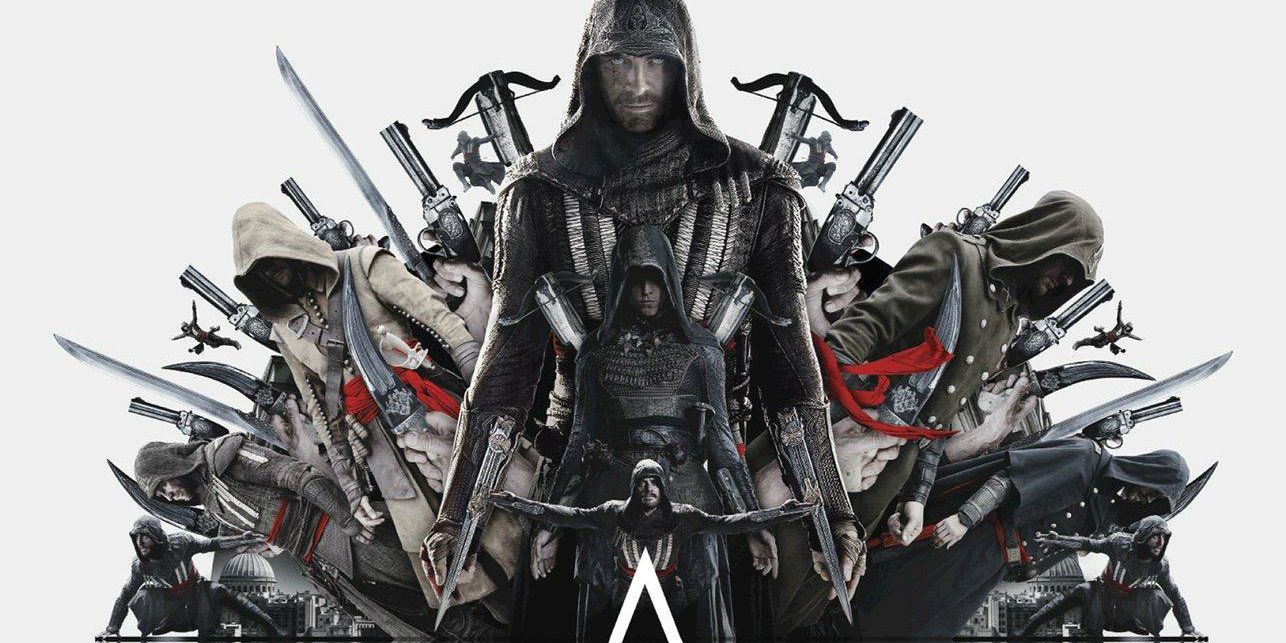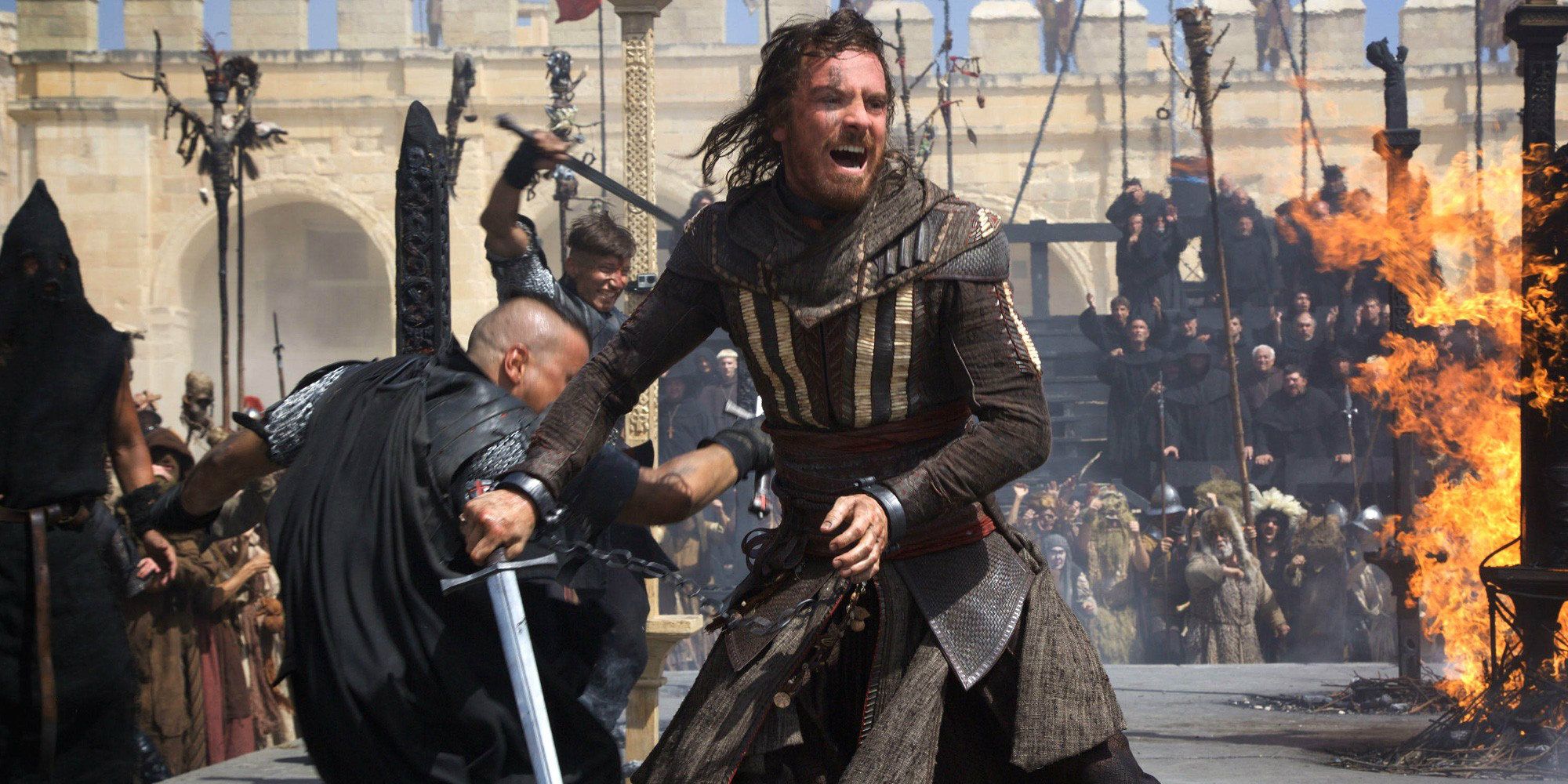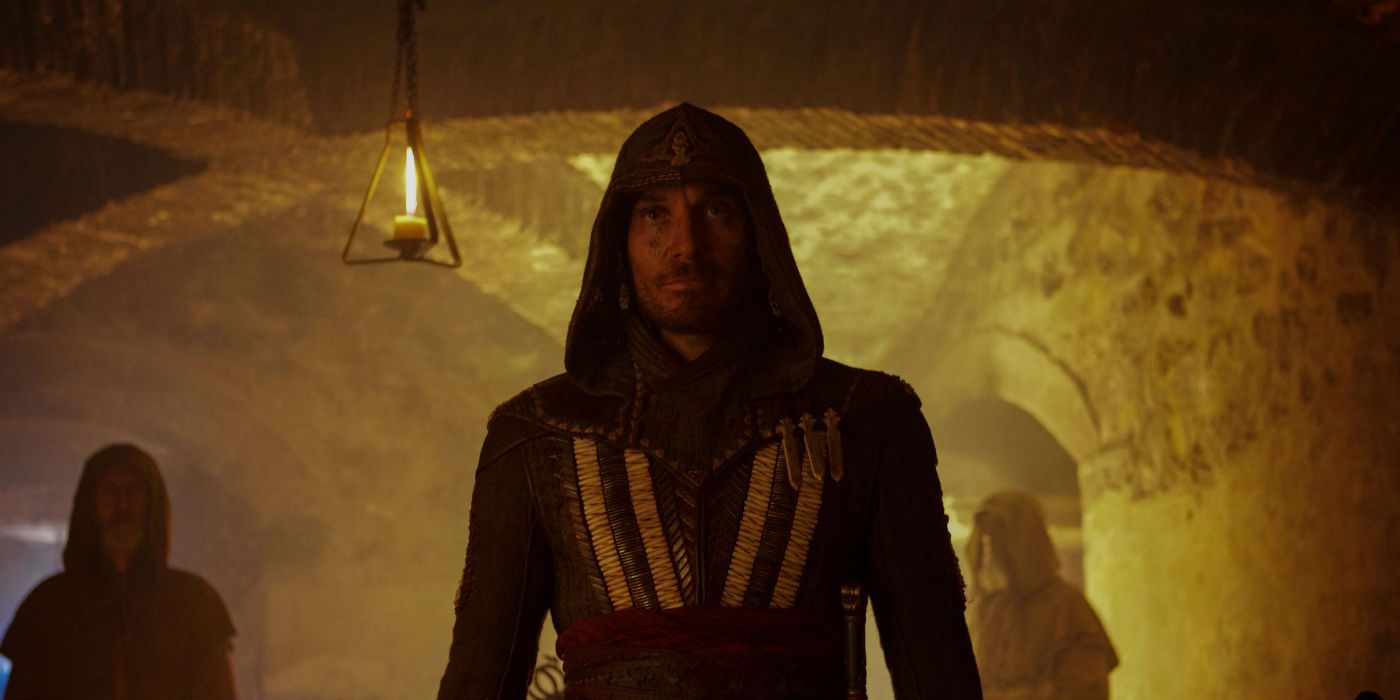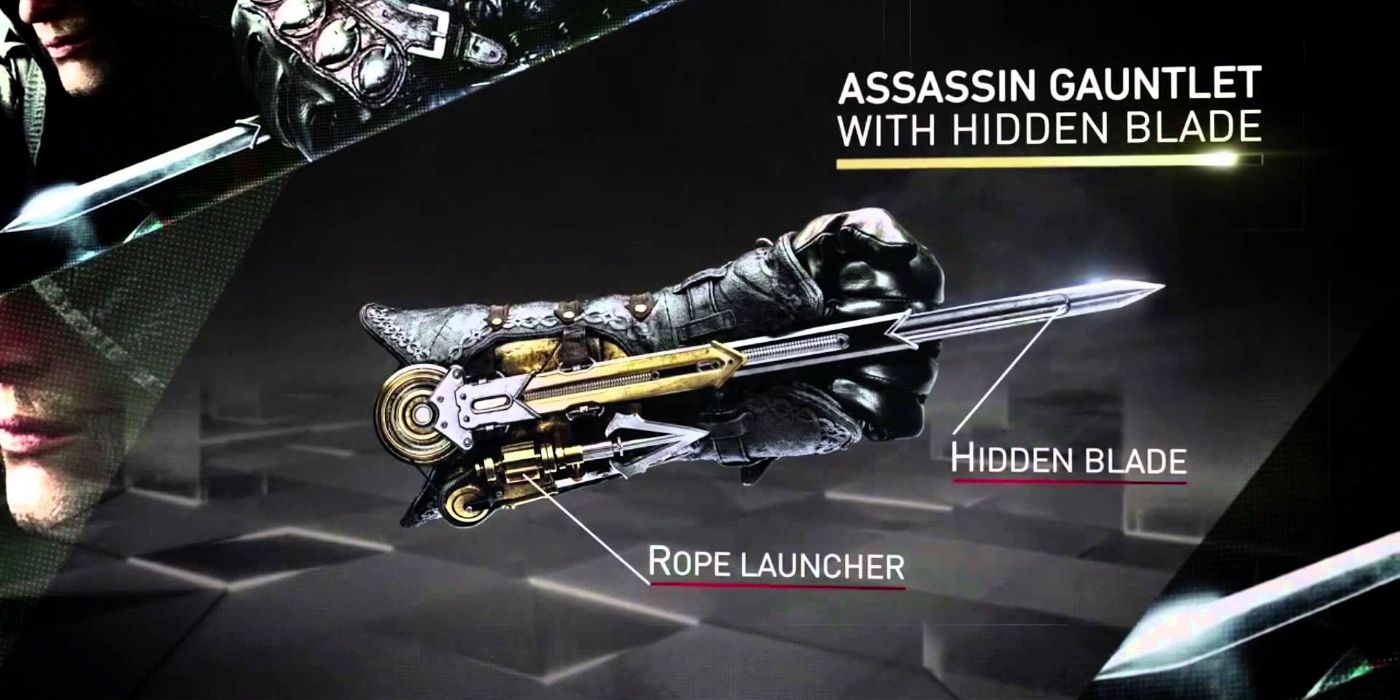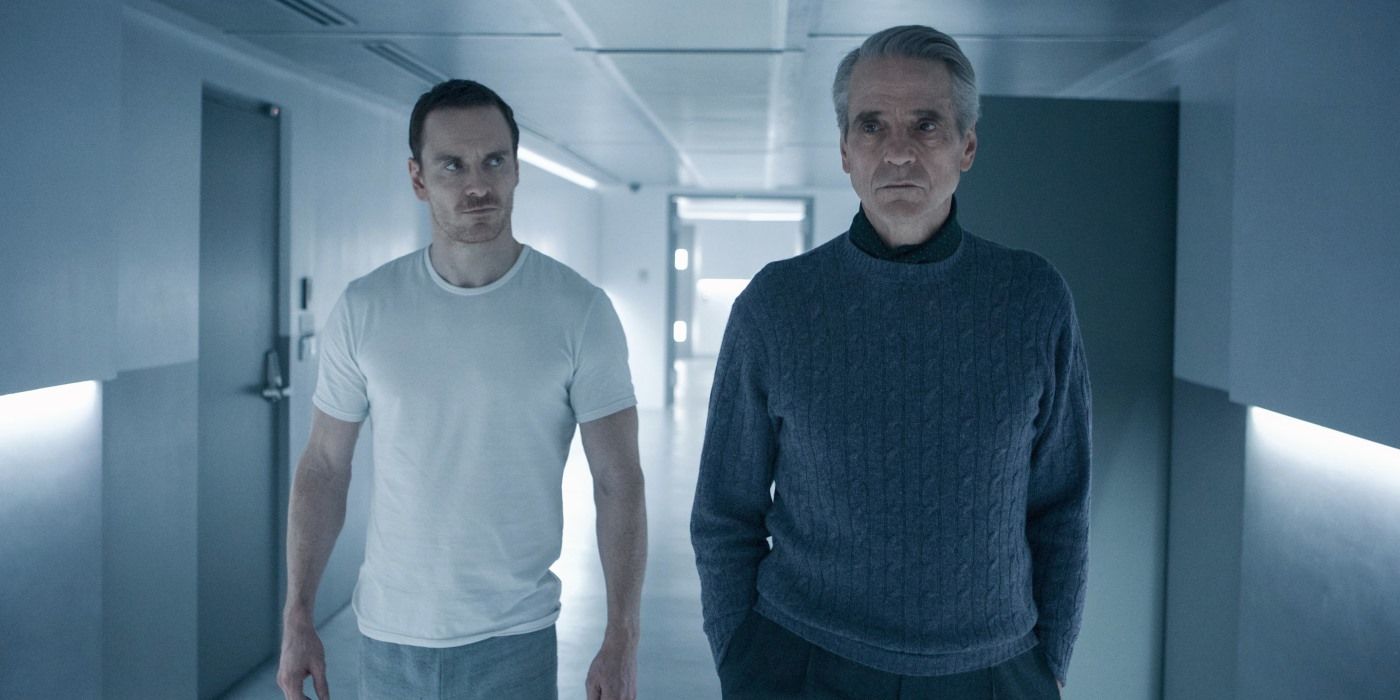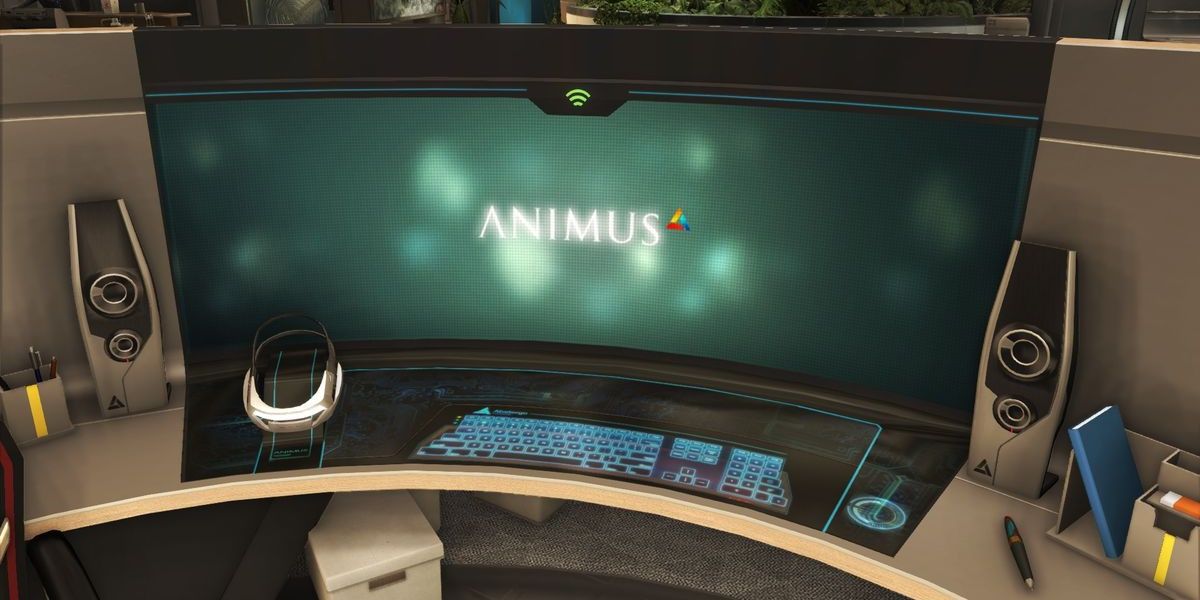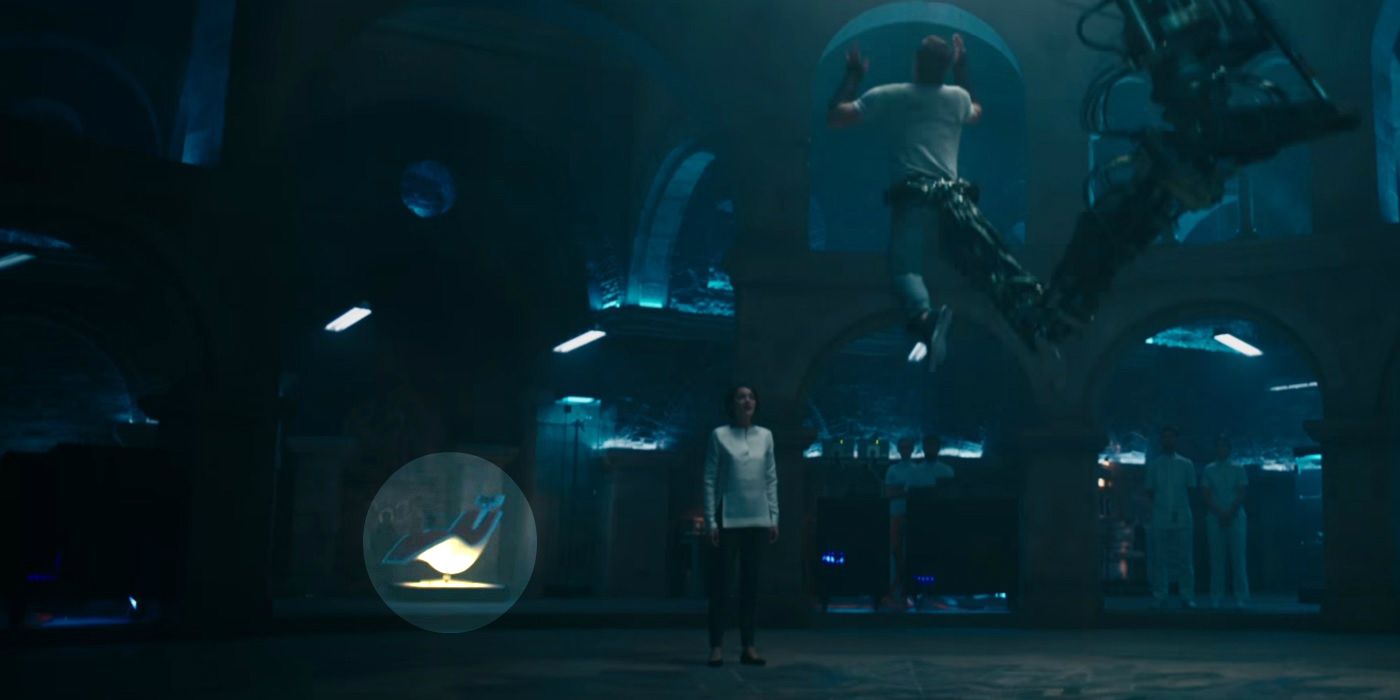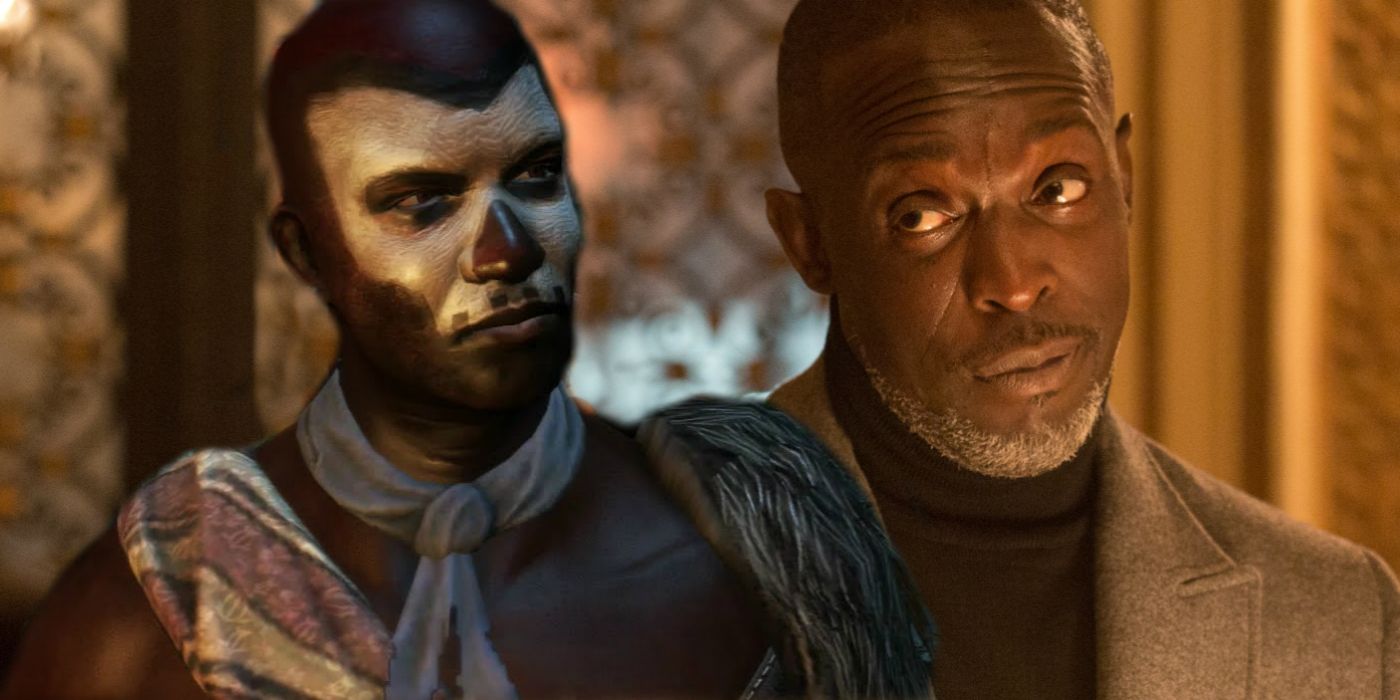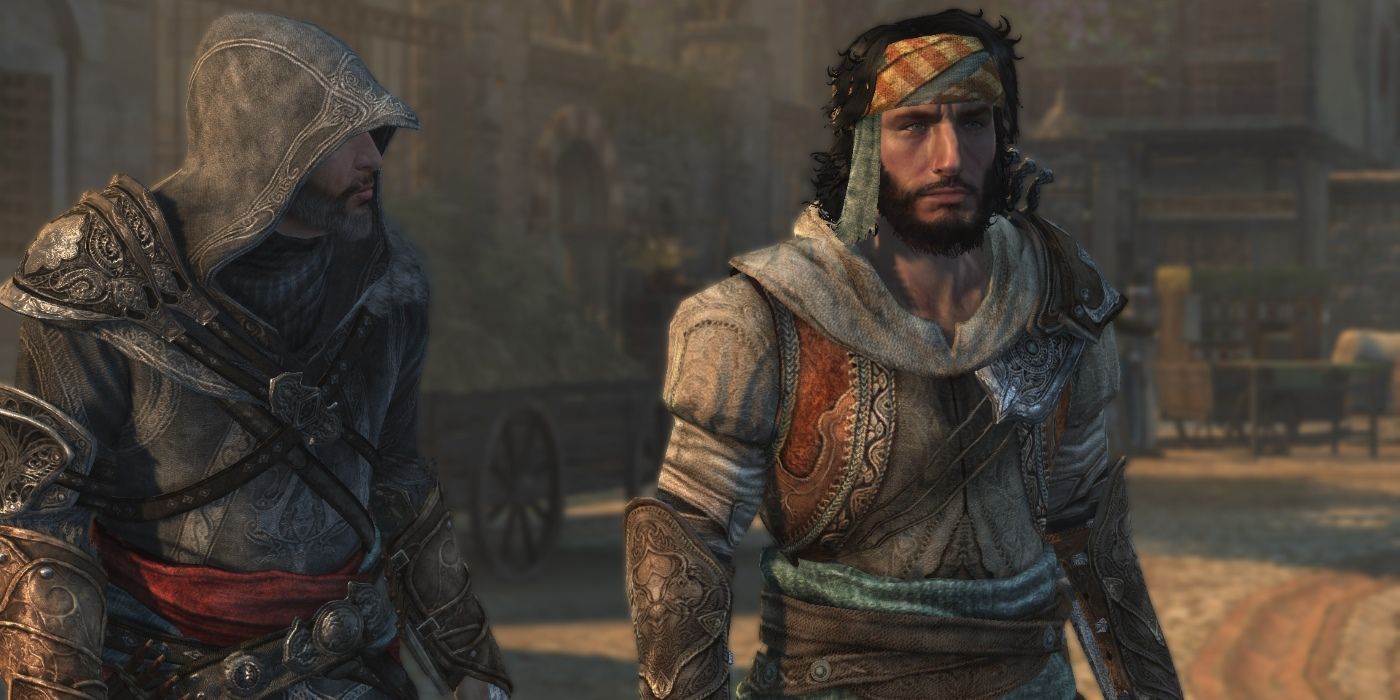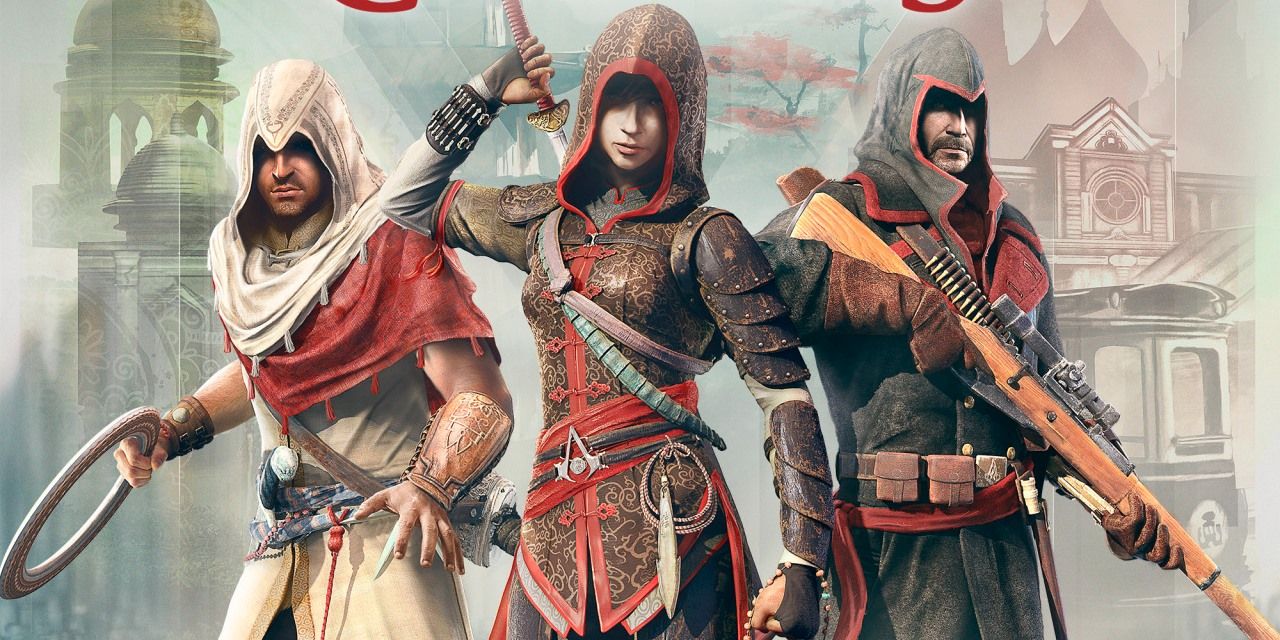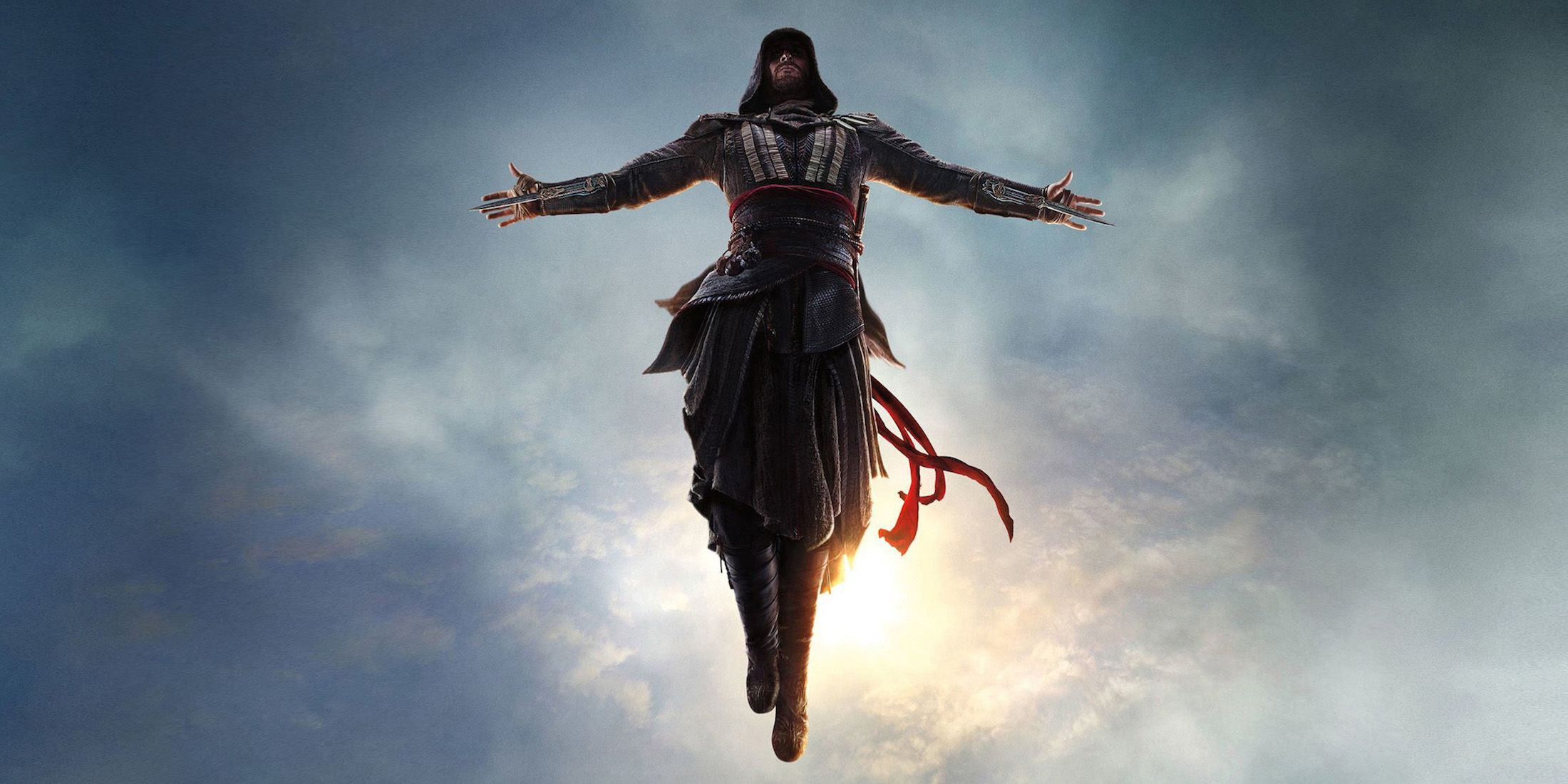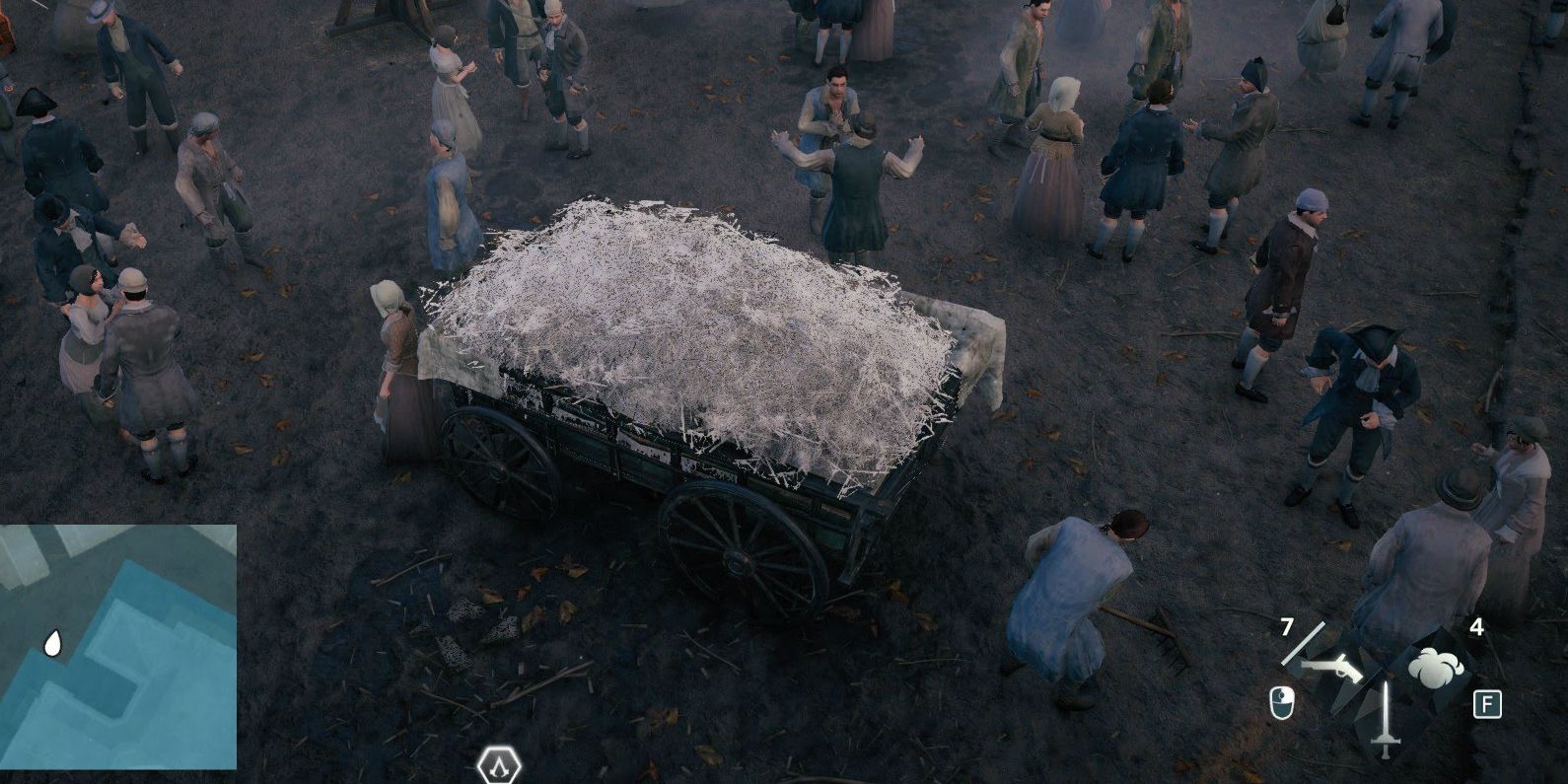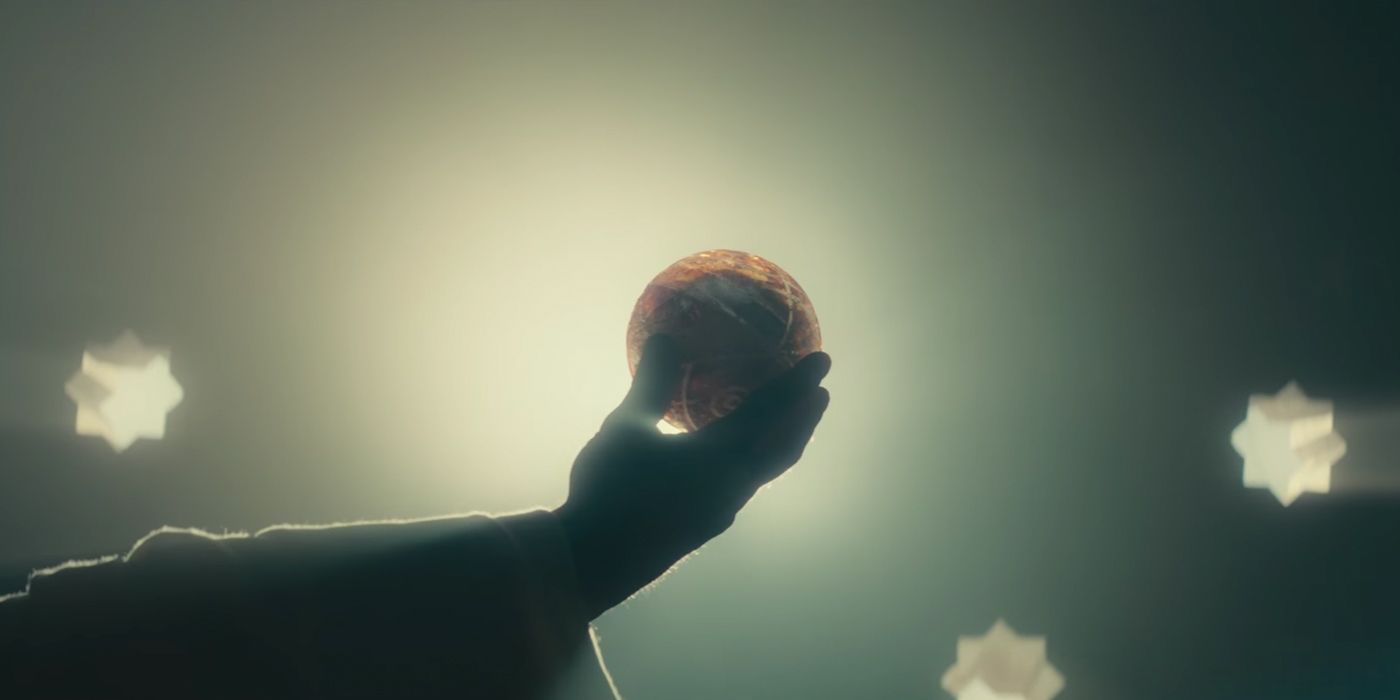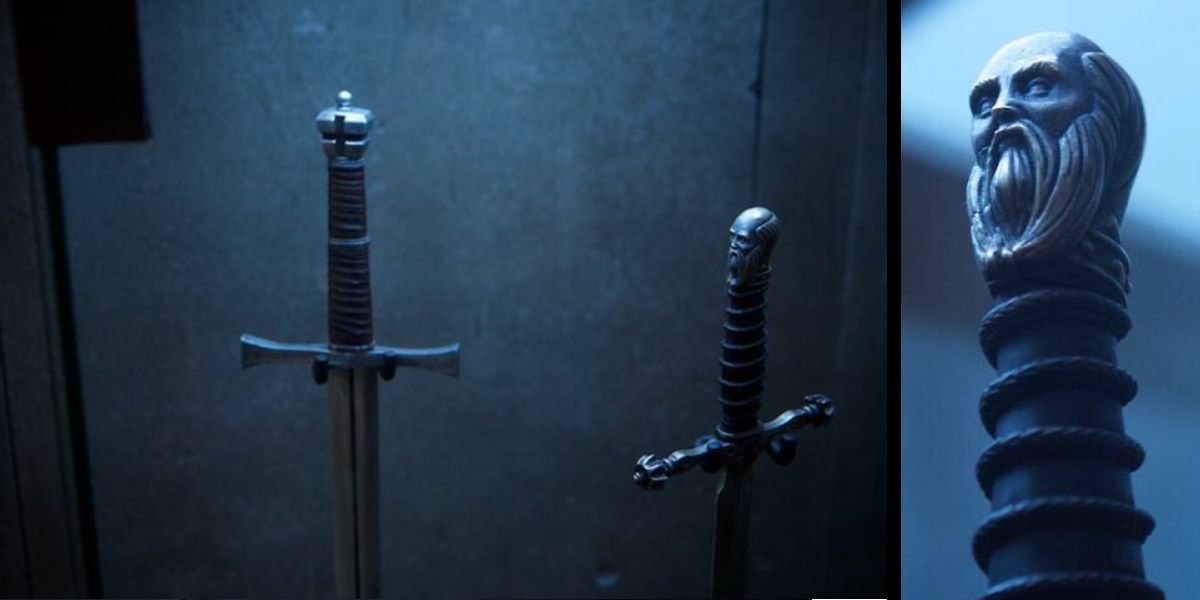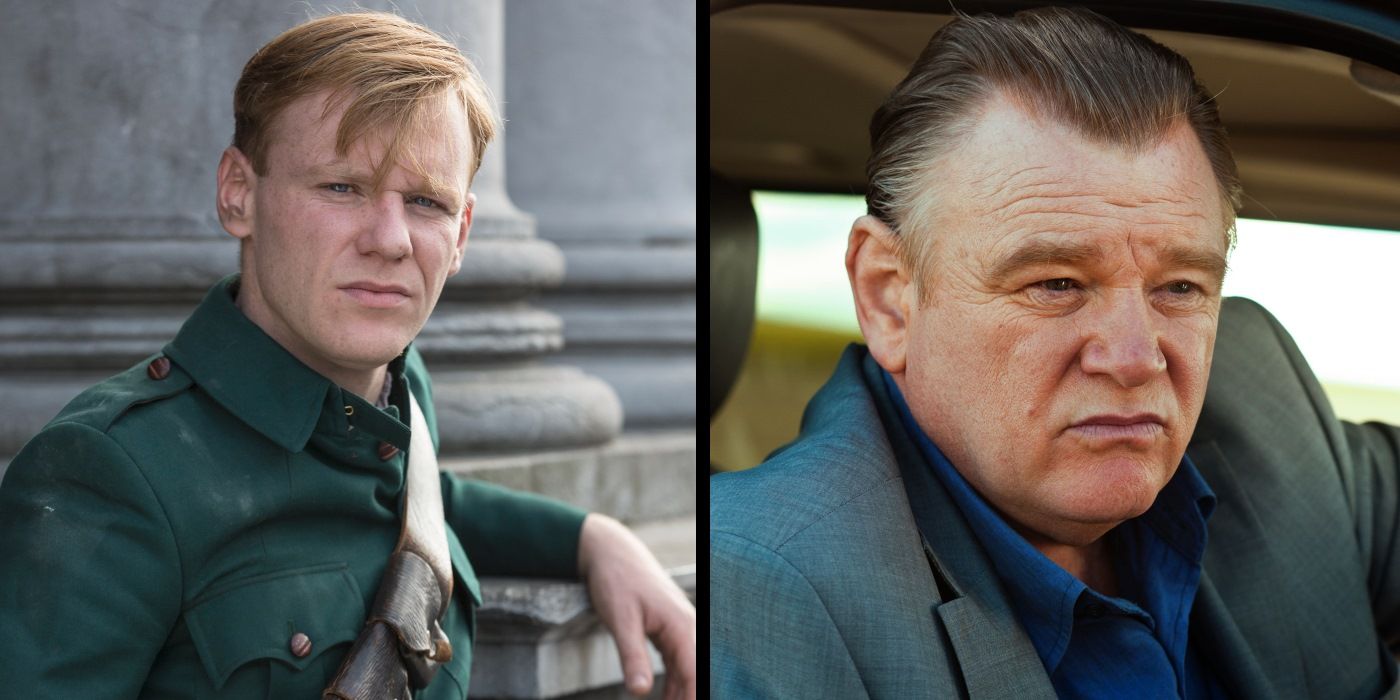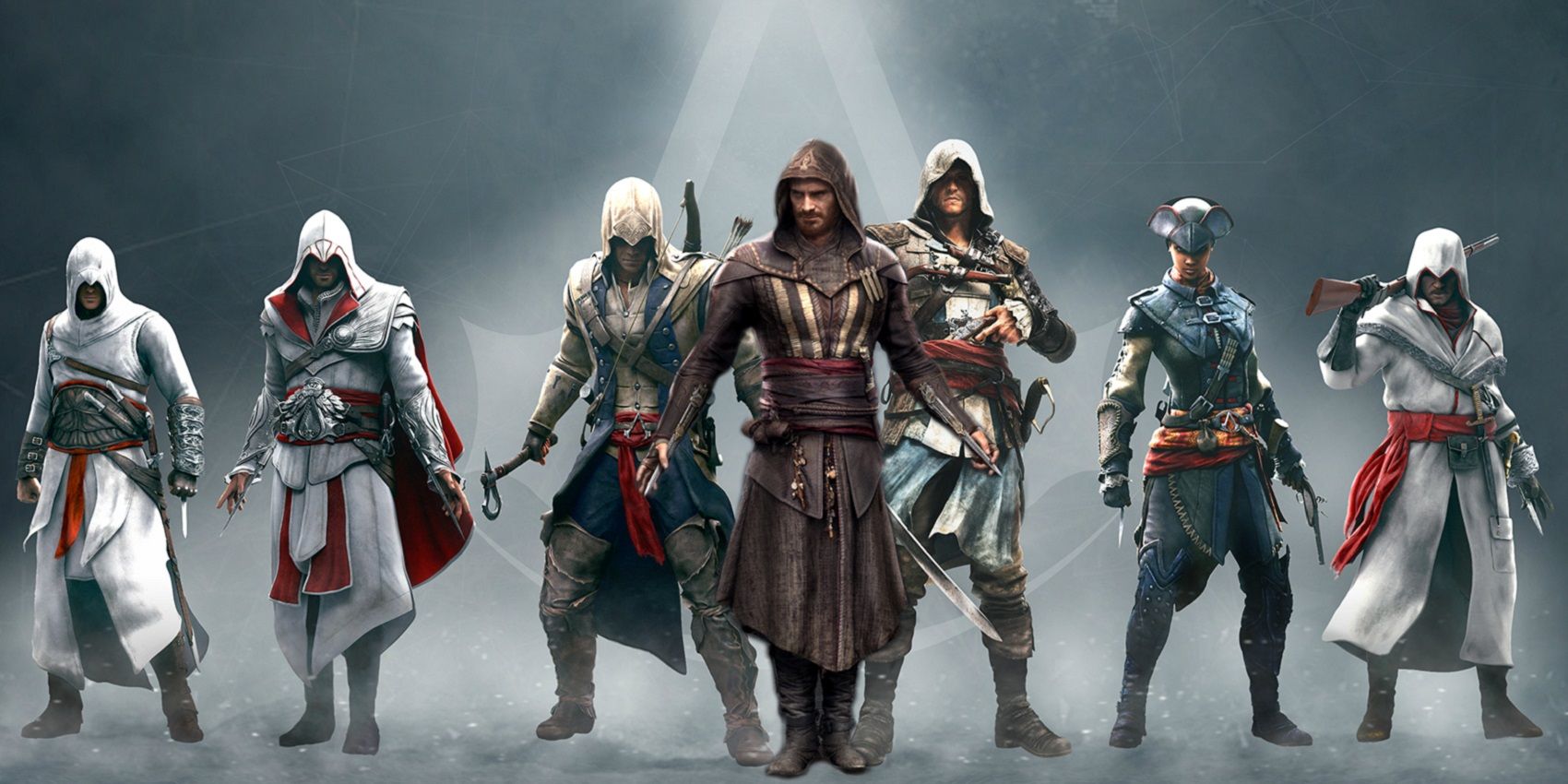[WARNING: This article contains potential SPOILERS for Assassin's Creed]
-
Given the reputation for video game adaptations in the past, it's fair to say that for fans of the original properties, easter eggs and hidden references are often the bright spot in otherwise disappointing endeavors. Assassin's Creed is looking to change all that, beginning with the fact that the film is not an adaptation of a previous game or story. Instead, it's a chapter taking place right alongside the games, comics, and novels - opening the door to a new kind of fan service.
The film continues the millennia-old war between the mysterious Assassins and the manipulative Templars, but there is even more of the game's rich mythology at play below the surface. Whether it's video game moments recreated completely on film, subtle connections to other branches of Ubisoft's fictional universe, or good old fashioned hidden details in the background of scenes, fans won't want to miss a single one.
Needless to say, there will be SPOILERS in our look at the Assassin's Creed Movie Easter Eggs and Game References.
15. Aguilar - The Eagle
Even before we get into the actual plot of the movie, there's a massive detail most fans will overlook - as they have for most of the other Assassin's Creed protagonists that preceded this story. Despite the fact that the historical side of the story - the Spanish Inquisition - makes up a minority of the movie's running time, the ancestor of Callum Lynch (Michael Fassbender) is no less an Assassin. And that fact is driven home in his name: Aguilar de Nerha.
While "Nerha" is a reference to his birthplace (literally "of Nerha"), the name "Aguilar" is far more significant. Translated, that surname means "a place inhabited by eagles," a pretty significant bird in the imagery of the franchise as a whole (this film included). It's a repeated theme among Assassins, too, with the original hero Altaïr's name also meaning "eagle" or "flying bird" and his successor, Ezio, deriving his name from the same bird.
14. The World's Worst Wedding Ring
When we're introduced to Aguilar in the film, he's preparing to be formally inducted into the Assassin Order, having lost the rest of his family to the Inquisition. It's a process that begins by reciting the literal Assassin's Creed - "nothing is true, everything is permitted" - before undergoing a bit of painful body modification. The movie leaves it somewhat unclear exactly what has happened, but make no mistake: Aguilar has willingly had the ring finger of his right hand removed at the base.
New audiences will be forgiven for missing the detail, since it's a more significant feature of the original game. In the mythology, the famous Hidden Blades mounted on Assassins' wrists actually required the loss of the finger to function (passing through the created gap in the fist) until newer models were designed. It's true that Aguilar's finger can later be seen re-attached in the film, but considering the alternative would be digitally removing it frame by frame... we'll let them off the hook, and appreciate the nod to the source material.
13. The Assassin Rope Launcher
The movie, sadly, doesn't adapt too many of the Assassins' more... ambitious inventions or gadgets, sticking mainly with traditional weaponry and physical prowess to keep them ahead of their Templar opponents. But during the first session inside the Animus, as Cal relives Aguilar's memory of saving the life of a young prince, fans do get to see a glimpse of the versatility behind the Order's gauntlets. In fact, it's s relatively new addition in the video game universe.
We speak, of course, of the rope launcher that fires out of the gauntley, embedding an anchor in the cliff face Aguilar and the prince go tumbling over. Cal de-synchronizes before we get to witness the outcome of the feat, but it's a nod to the games all the same. The rope launcher was introduced in the recent Assassin's Creed: Syndicate, with Assassin's Jacob and Evie Frye actually stealing the technology from Templars, and having it adapted into their gauntlets by inventor Alexander Graham Bell.
12. Dr. Alan Rikkin
It may be Dr. Warren Vidic who's best known as the face of Abstergo in the main Assassin's Creed video games, but the inclusion of Dr. Alan Rikkin (Jeremy Irons) isn't a replacement. In the extended universe of the games - told in comic books or hidden in in-game email exchanges - Dr. Rikkin is actually a major player as the CEO of Abstergo. In fact, he was the person who appeared to oversee the entire Animus project, even urging the project leads to eliminate the first game's hero, Desmond Miles, when his synchronizations were taking longer than expected. If they listened to him, the Assassins may have been wiped out before they dreamed of a comeback.
In the film, it's strongly implied that Rikkin's daughter Sophia (Marion Cotillard) is the real brains behind the Animus operation. While Rikkin seems to be an overbearing, power-hungry villain by comparison, the extended fiction gives a bit more of an explanation. According to the Templar higher-ups, the world stands on the brink of a total economic collapse, expected to plunge humanity into total anarchy. The only way to stop it, they reason, is to discover the Apple of Eden before then, and establish a New World Order. Not a perfect motivation, but at least an understandable one.
11. Abstergo Industries
In the film, not much time is actually spent exploring the nature of the corporate entity known as "Abstergo." The research facility in Madrid shows they're certainly well-funded, but in the end, remain a generic "evil company bent on world domination." Unfortunately, the intricacies of the modern Abstergo conglomerate make up some of the most entertaining, self-referential, and detailed branches of Ubisoft's fictional universe. And while the series began much like the film - mystery man holds the key to the future, and is recruited and deceived by the Templars - it twisted into some truly strange corners.
Not only was the first hero just one of many Assassins integral to Abstergo's aims, but the players actually faced a similar recruitment, stepping into the role of an Abstergo employee. If movie fans took one look at Callum diving into his ancestor's memories and wished for the same experience, the Abstergo of the games could deliver... by recording those interactions, and selling them to the public as video games. The movie didn't reveal if Cal's memories were being converted into the Assassin's Creed games of the movie's 'real world,' but there's always the chance for the sequels to explore the same 'meta' territory.
10. A Hidden Animus
It's a brand new form of Animus introduced in the film, obviously deeming the excitement level of watching a film's hero lay down in a chair a bit lacking for the back screen (either that, or inviting too much of a comparison to The Matrix). The answer is the Animus 4.3, hooking directly into the spine of the subject to mount them to a massive, articulated arm. This allows the subject to not just see the memories of their genetic code, but act out the memories of their ancestors, with the arm simulating resistance and gravity.
It's an impressive piece of tech to behold, but make sure to keep your eyes focused on the background of the scene. Behind Dr. Rikkin, fans can get a solid glimpse at the unforgettable outline of the Animus 2.0. It's a shame that the support characters of the modern day Assasins couldn't appear on film (they had their hands full in the games taking place alongside), but at least Rebecca Crane's overhaul and simplification of the Templars' Animus made a cameo.
9. Mousa AKA Baptiste
When the minds behind the movie claimed that it wouldn't be a retread of any prior video game, but a new chapter in the shared AC universe, fans didn't know quite what to expect. But the first evidence of just how committed to that idea the filmmakers actually were came in the form of Moussa (Michael K. Williams), a fellow recruit being used by Abstergo for his genetic memories. When introducing himself in the film, Moussa gives his own name, but clarifies that who the Templars are really after is his ancestor, "Baptiste." That's no random name, and possibly the film's most intriguing connection to the video games.
Baptiste was introduced as an antagonist in Assassin's Creed III: Liberation, a game following the adventures of the Assassin Aveline de Grandpré in the late 18th Century. Baptiste was best known for his skills with voodoo and his turn from Assassin to Templar, but he's not a simple villain (his "betrayal" came only after he was abandoned by his mentor). As the movie implies, the memories extracted from Moussa were used to create the narrative of Liberation - while also taking the relevant evidence of the Assassin movements and activities in the New World.
And as far as video game Assassins sharing ties with the movie, Moussa is not alone...
8. Yusuf's Descendant?
In the world of Assassin's Creed, there's no bigger star than the man who revived the Assassin Order of Italy - and later, Europe - and helped take the franchise from promising to mega-profitable. His name is Ezio Auditore da Firenze, and he's the character fans were most hoping to see referenced on film. While the movie didn't deliver on that cameo, the story does include the descendant of one of Ezio's closest friends and fellow Assassins. It's not stated outright in the actual movie, but fellow Abstergo prisoner 'Emir' (Matias Varela) was revealed to have an ancestor "where East Meets West" and who closely interacted with one of the most influential Assassins of all time.
Since the description is a perfect match for Istanbul, or Constantinople as it was known when Ezio traveled there in Assassin's Creed: Revelations, the choices are limited significantly. And if the filmmakers were making that coy - but obvious - a reference, then it seems most likely for the ancestor in question to be Yusuf Tazim, leader of the Constantinople Assassins and a fan-favorite who gave his life for the cause. It's fitting, if true, since his descendant Emir does the same, assisting the Assassins' escape from Abstergo's security room before falling to a Templar assault.
7. Shao Jun's Descendant
Also included in the roster of Abstergo test subject is one woman of Asian descent whose description in production notes seemed just as obvious, claiming that her ancestor was a "well traveled," 16th Century Chinese woman. The list of existing characters in the extended mythology who fit that description was even shorter - it's a dead ringer for Shao Jun, the 16th Century Chinese Assassin who began her life born into bondage as a future concubine of the Emperor Zhengde. When the Emperor fell, she was rescued and recruited into the Assassin Order. When her fellow Assassins fell, she fled to the West in search of help - from none other than Ezio Auditore.
That meeting was shown in the animated short film Assassin's Creed Embers, chronicling the final days of Ezio (and the lessons he passed to his final student, Shao Jun). The rest of her story played out in Assassin's Creed: Chronicles, detailing her return to China, poisoning of the Emperor, and eventual revenge upon those who had wronged her. Apparently, those memories came courtesy of this movie's 'Lin' (Michelle H. Lin), adding yet another link to Ezio into the movie's universe.
6. "The Leap of Faith"
The new Animus may be impressive, but it seems to add a new problem into the mix: when Aguilar makes his first leap off the edge of a cliff, the drop (or apparent threat to his life?) causes Cal to de-synchronize violently. Later on, he manages to synchronize far more successfully - right up to the point that Aguilar takes a flying leap off of a soaring tower. We don't get to see the landing, since Cal once again de-synchronizes. It's only later on in the film that Cal finally lands a great fall, destroying the Animus arm and causing Sophia to utter a familiar term: "the leap of faith."
It's the term given to the same jump in the video games, triggered when the player's character reaches a high point, synchronizes with the surrounding area, then leaps hundreds of feet into a small target (hence the "faith" part). It's a wink to fans, but the massive leap itself isn't just CGI trickery: it's actual footage of stuntman Damien Walters in a record-breaking freefall. The video game trope is doubled down upon in the film's final shot, as an eagle soars nearby - the signature detail of a Leap of Faith location being reached, and Cal begins the leap himself as the screen cuts to black.
5. The Straw Cart
The "small target" we mentioned above is also far-fetched in the sense that it's usually a wooden cart filled with straw. It began as a small detail, but eventually grew to legendary status, with countless memes and online jokes poking fun at the idea of a Looney Tunes-esque stunt existing in otherwise self-serious environments and story moments. It was even called out in The Witcher series, with the game's hero stumbling upon a dead, white-robed figure next to a pile of straw, observing the stupidity of anyone who would expect to land safely in a few feet of hay. And now, it's even been referenced on the big screen.
It's a small moment, but pay attention as Aguilar and Maria (Ariane Labed) are making their escape along city rooftops. As one enemy is sent flying down to the street below, it makes a violent landing inside - what else - a cart filled with straw. The fact that one appears so prominently on screen would be enough of an easter egg, but sending someone tumbling into it is just icing on the cake.
4. The Apple of Eden
It's hard to believe, but the countless billions spent on the Animus Project ($3 billion a year, to be exact) are just one of many programs run by the Templars to track down a single small object. Known as the Apple of Eden, the object is believed to possess the power to end violence, having first corrupted mankind (hence the name). In the end, it's revealed that the Templars' actual plan is nowhere near as noble, since they crave the object to subjugate all of humanity before their rule. The casual viewer may not grasp exactly how the relic is expected to do that, but players of the video games know what they're really looking at.
The Apple may seem like a holy relic, but in truth, it's a remnant of an ancient, super-intelligent, advanced race that once resided on Earth, known as The First Civilization. The members of this race, also known as the Isu, were the ones responsible for raising humanity up from the dirt into its current form, requiring a somewhat intelligent workforce. The video games revealed the true story behind the Apple, with two such human slaves named Eve and Adam stealing the artifact, and being gifted a new form of awareness as a result. It started the revolt that led to mankind's supremacy on the planet, and in the wrong hands, that 'higher level of awareness' can be wielded as a weapon, essentially mind-controlling anyone on Earth.
3. Templar Swords
The very first game in the Assassin's Creed series began with literal Assassins and members of the Knights Templar during the Third Crusade, making their respective monikers completely logical. In the fiction since, the Templars have been shown to have gone by that name long before the official order of knights, with the crusades a not-insignificant moment in their own history and search for other pieces of Eden. And in the halls of the Madrid facility, that history can be seen.
Among the many medieval swords on display in Rikkin's portion of the facility is one that stands out, thanks to closer looks offered in official set photos. The sword in question features a bearded man on its pommel, which is almost certainly the likeness of Jacques de Molay, the last Grand Master of the Knights Templar, executed when the order was dissolved and forced into false confessions. The Templars of the movie universe didn't dissolve at all, but the death of their last official leader (and one of the best known Templars) is clearly deserving of such a memorial.
2. Like Father, Like Son
The story of Callum Lynch's life turned into a tragedy early on, when his childhood was cut short by the worst kind of murder. Returning home to find his mother dead was bad enough - seeing that his father had committed the act was unthinkable. We're only given a glimpse or two of his father before the thirty-year time jump eventually leads to actor Brendan Gleeson playing the part. It's a pained reunion, with Cal's father finally explaining why his mother decided that death was the only way to prevent the Templars from advancing their cause (and that he really should have killed Cal, too). But if the transition from young 'Joseph Lynch' to his older counterpart is particularly convincing, it's no accident.
The younger actor is Brian Gleeson, the real-life son of his father, Brendan. The veteran of Snow White and the Huntsman and Rebellion is just one of the elder Gleeson's sons who followed in their father's footsteps (the other being The Force Awakens' Domhnall Gleeson), but it's his resemblance that's most important here.
1. Game-Era Artifacts
There are far too many Assassin's Creed games, heroes, villains, settings, and time periods to do them all justice in a single film, but that doesn't mean fans shouldn't keep their eyes peeled. The film's propmakers requested detailed models of the game's many weapons so as to recreate them for live action, and most of the weapons seen in the film should look familiar to players of the series. But not all of the nods are so clearly called out.
In the many glass cases and displays throughout the Abstergo work stations, fans can catch glimpses of Ottoman helmets, the Assassin's signature bombs, Italian cowls and gauntlets, and more. The closer looks may have to wait until the movie is made available on home video, but scanning every scene for an appearance of a specific game or setting's signature weapons or armor is a worthwhile endeavor in the meantime.
-
So there you have it, our breakdown of each and every easter egg, video game connection, and behind-the-scenes trivia in Assassin's Creed. If you've spotted anything we've missed, or have questions unanswered, let us know in the comments!

